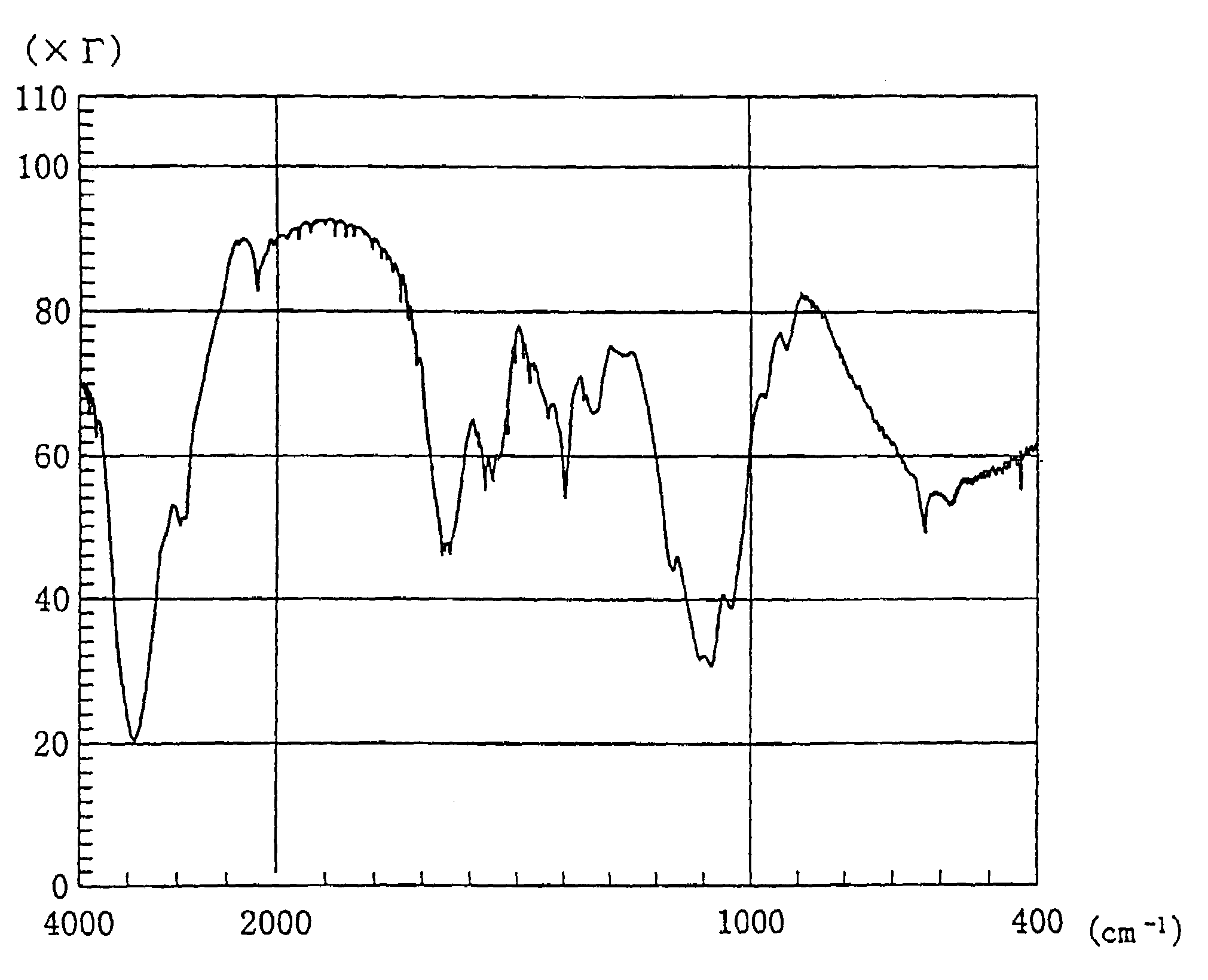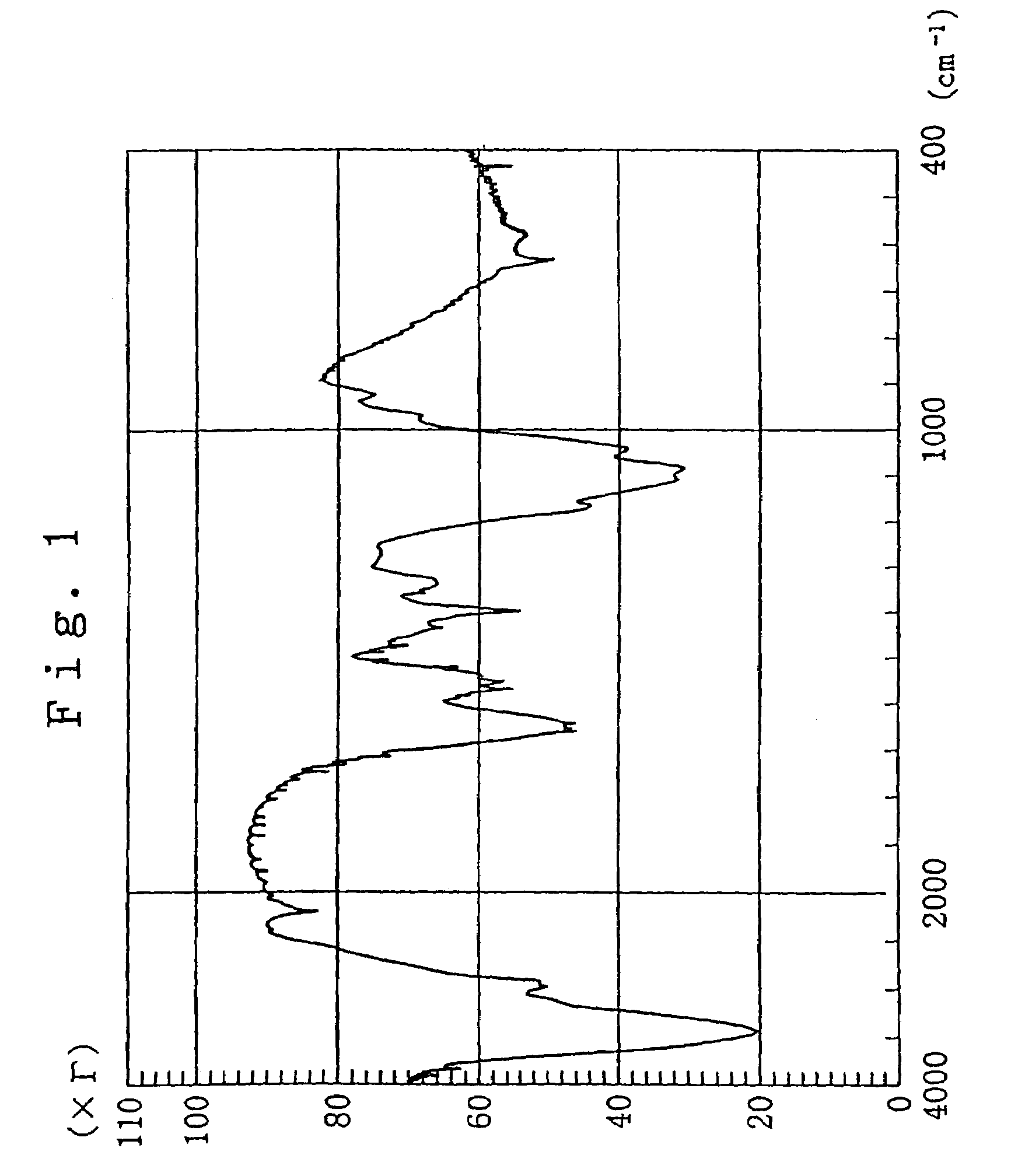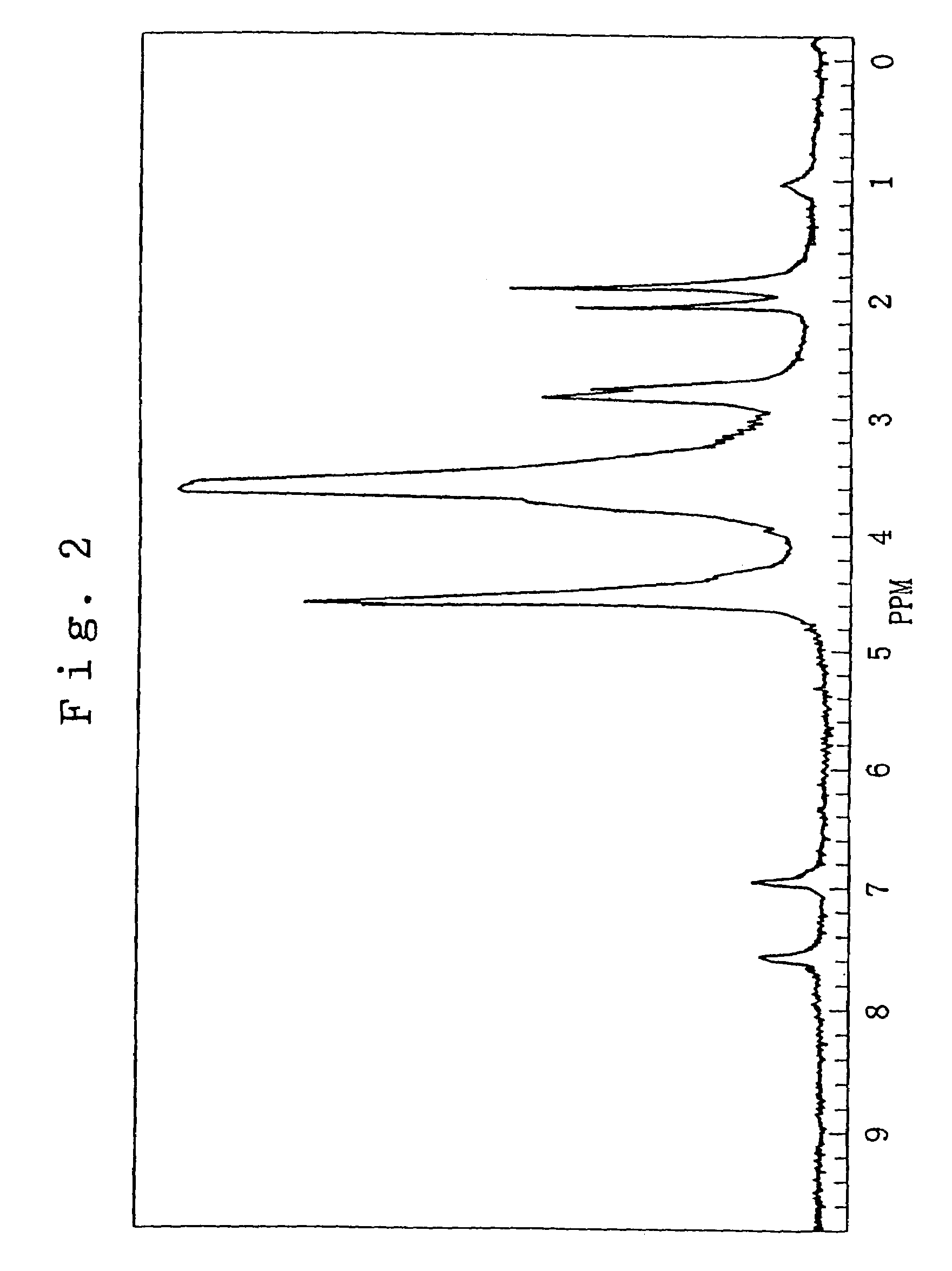Functional chitosan derivative
a technology of functional chitosan and chitosan, which is applied in the field of functional chitosan/chitosan derivatives, can solve the problems of limited application range, low water content of chitosan, and low water content, and achieve safe compatibility and high water content
- Summary
- Abstract
- Description
- Claims
- Application Information
AI Technical Summary
Benefits of technology
Problems solved by technology
Method used
Image
Examples
example 1
Preparation of Chitosan Derivative
(1) Preparation of Chitosan Derivative Incorporating Carbohydrate Having Reducing Terminal (First Functionalization)
[0063]125 g of chitosan obtained by deacetylating chitin from crabs by an alkali process (degree of deacetylation 80%, molecular weight 1,000,000, produced by Yaizu Suisan Kagaku Industry. Co., Ltd. (hereinafter referred to as “Compound 1”)) were dispersed in 10 liters of a 50 mM aqueous solution of tetramethylethylenediamine (TEMED), after which 56.25 ml of hydrochloric acid were added and dissolved. 32.5 g of soluble carbodiimide (EDC) and 20.25 g of iodinated lactose were added to this chitosan solution, and the result was allowed to react for 24 hours at room temperature. Unreacted substances of a molecular weight of 10,000 and below in the reaction solution were removed by ultrafiltration, to obtain a chitosan derivative wherein the 2-position amino group in the glucosamin units forming the chitosan were substituted with lactose (...
example 2
pH Solubility of Chitosan Derivative
[0073]The ranges of solubility of the 0.1% aqueous solution of the carbohydrate-substituted chitosan derivatives prepared in Example 1(1) are shown in the following Table 1.
[0074]
TABLE 1Soluble pH RegionCompoundpH Region1pH 4.0 or less1-A1pH 7.5 or less1-A2pH 13.0 or less1-B1pH 6.8 or less1-B2pH 13.0 or less1-C1pH 6.8 or less1-A2pH 13.0 or less
[0075]As shown in the above Table 1, the incorporation of disaccharides into the chitosan moderates the acid-dependent water solubility of the chitosan indicated by the untreated chitosan (Compound 1), thus allowing for-solubility in the neutral region.
example 3
Evaluation of Ability to Form Insoluble Self-crosslinked Structures
[0076]Respectively 10 μg of the Compound 1-A (azidobenzoic acid-substituted chitosan derivative) prepared in Example 1(2), and Compounds 1-A1-a and 1-B1-a (lactose- or maltose-, and azidobenzoic acid-substituted chitosan derivatives) were dissolved in distilled water to form 1 wt % aqueous solutions, which were then placed on a glass plate. Immediately thereafter, they were irradiated with ultraviolet rays (200–380 nm, 5.5 mW / cm2) for 10–90 seconds. Then, the insolubilized chitosan derivative gel was immersed in 100 ml of distilled water for 24 hours, to dissolve out the water-soluble chitosans, and the result dried.
[0077]The change in weight prior to and after ultraviolet irradiation was measured, and gelation rate was determined. The results are shown in the following Table 2.
[0078]
TABLE 2Insoluble Gelation Rate of Photo-hardened ChitosanWeight RemainingAfter Water-Rinsing / Original WeightIrradiation Time1-a1-A1-a1-...
PUM
| Property | Measurement | Unit |
|---|---|---|
| time | aaaaa | aaaaa |
| thickness | aaaaa | aaaaa |
| thickness | aaaaa | aaaaa |
Abstract
Description
Claims
Application Information
 Login to View More
Login to View More - R&D
- Intellectual Property
- Life Sciences
- Materials
- Tech Scout
- Unparalleled Data Quality
- Higher Quality Content
- 60% Fewer Hallucinations
Browse by: Latest US Patents, China's latest patents, Technical Efficacy Thesaurus, Application Domain, Technology Topic, Popular Technical Reports.
© 2025 PatSnap. All rights reserved.Legal|Privacy policy|Modern Slavery Act Transparency Statement|Sitemap|About US| Contact US: help@patsnap.com



